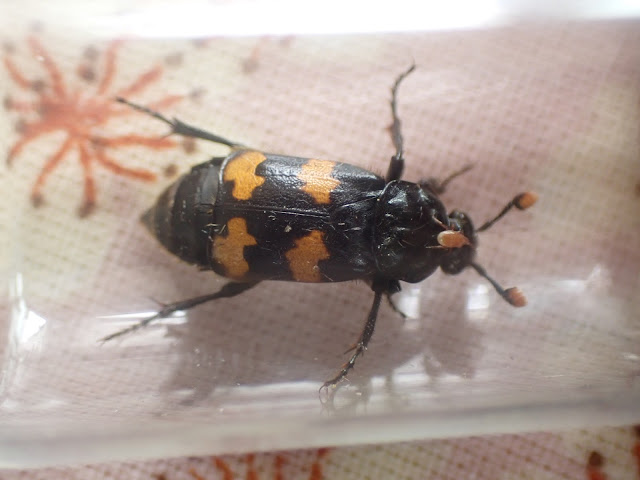This week work took me out to east Norfolk to visit a couple of projects, First off was a trip to Eccles-on-sea to see the work of protecting beach-nesting Little Terns.
Lots of dedicated staff and lots of volunteers has meant that the terns are doing well this year, with a good number of nests already underway. Talking to passer-bys and making sure they avoid disturbance by keeping to the shoreline as well as keeping dogs on leads definitely seems to be paying off. Although wouldnt it be great if this type of thing wasnt needed at all!
I did have a quick poke about in the dunes for beetles and found my third record of Crypticus quisquilius alongside Harpalus affinis, Amara tibialis and A. ovata and a single Lesser Stag floundering in the sand.
The second part of the day was a visit to a nearby fenland broad site. Despite a few ominous clouds the rain held off and we were treated to a spectacular landscape.
I didn't really have time to look for beetles but I did manage a new species in the form of Plateumaris bracata. The Broads does appear to be the best place to see this species in the UK.
Highlight of the day was a species I hadn't expected to see. Fen Orchid. One of the less gaudy orchids but a rather subtle and lovely thing and rather difficult to pick out amongst the other vegetation.
I won't mention the fact that this is the first post in over a year! Hopefully I can be arsed to post a bit more regularly again.



















